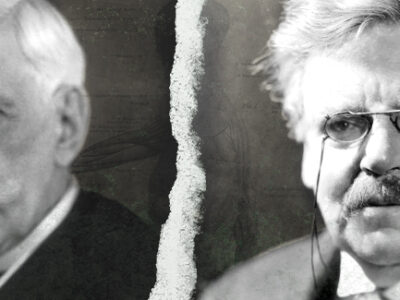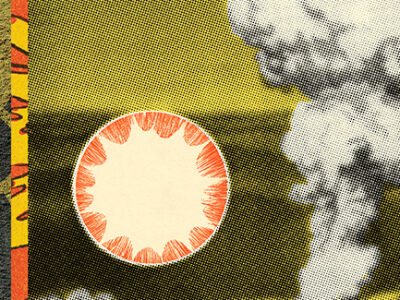The media is so obsessed with anniversaries that it almost seems a news story when the media misses an anniversary. That appears to be the case as December 2007 drifts away with no fanfare for a significant series of events that took place 20 years ago this month, when the world was suddenly made a much safer place.
It was in December 1987 that the leaders of the two superpowers—Ronald Reagan and Mikhail Gorbachev—met in Washington, DC for their third summit, where they signed the greatest nuclear arms treaty ever: the Intermediate-Range Nuclear Forces (INF) Treaty. They did so amid heated opposition, including within Reagan’s own party—bitter opposition that today is conveniently forgotten.
Here was the context going into that December: Both Reagan and Gorbachev badly wanted to reduce nuclear arms. Reagan, despite the left’s caricature of him as a Neanderthal nuclear warmonger, detested such weapons. Ever since he and Gorbachev met at Reykjavik a year earlier, the question had been whether Reagan would compromise his Strategic Defense Initiative (SDI) to reach an agreement.
Reagan was caught in the crosshairs of the left and the right: the left wanted him to scrap SDI altogether, not realizing its tremendous bargaining power, nor grasping that missile defense was Reagan’s “dream.” Liberal journalists like Helen Thomas badgered Reagan at press conferences, insisting there would be no treaties unless he abandoned his silly SDI. The Democratic Party’s presidential nominee, Massachusetts Governor Michael Dukakis, disparaged SDI as a “magic gizmo.” Senator Ted Kennedy (D-MA) ridiculed the concept as “Star Wars”—a form of movie fiction cooked up by the addled ex-actor. “Nuclear freezers” like Helen Caldicott and Carl Sagan dubbed Reagan a simpleton, and were arrogantly oblivious at how their position served the Kremlin.
The right was more complicated. Generally, Republicans were in lock-step with Reagan, and took pleasure observing the panic that SDI struck in the Soviets, who (unlike American liberals) took it eminently seriously; others, however, were fearful that Reagan was being suckered by a slick Gorbachev. Observations to that effect by pundits like George Will and Charles Krauthammer were remarkably insulting. Conservative criticism was captured in an illuminating piece by Hedrick Smith in The New York Times magazine of January 17, 1988, titled, “The Right Against Reagan.”
Among Smith’s items was a confrontation in the White House Cabinet Room between Reagan and eight stalwart conservative Republican senators, one of which warned the president, “We’ve had leaders who got into a personal relationship and have gotten soft—I’m thinking of Roosevelt and Stalin.” The chair of the Conservative Caucus charged that Reagan was “fronting as a useful idiot for Soviet propaganda.” Grassroots organizers mounted a full-scale campaign against the treaty, forging a coalition called the Anti-Appeasement Alliance. Right-wing groups mailed out 300,000 letters and distributed 5,000 cassettes of a speech by a former NATO Supreme Commander attacking the proposed treaty. They savaged Reagan in newspaper ads suggesting he was the new Neville Chamberlain, with Gorbachev the new Fuhrer. The heading of the ad declared, “Appeasement is as unwise in 1988 as in 1938.” It urged: “Help us defeat the Reagan-Gorbachev INF Treaty.”
Some conservatives joined forces with the moral lepers of the foreign-policy right: the Nixon wing. These were the Machiavellians who would sell their mothers to the gulag—or at least Eastern European mothers—for a deal with the Russian Bear. The Nixonians opposed the treaty because it undermined the “stabilizing” presence of over 1,000 nuclear weapons poised to annihilate every two-legged creature in Europe.
Amid that fusillade, the Washington Summit commenced on December 7, 1987, highlighted by the “Gorbachev Tour” of America, where the Leninist was greeted by journalists swooning like teenage girls ogling the latest heartthrob. Sycophantic professors possessed by “Gorby fever” walked into walls inside their ivory towers.
Though Reagan liked Gorbachev, he was no dupe—despite what his friends on the right were claiming. This was clear as he immediately took Gorbachev to task on the matter of Soviet Jews not being allowed to leave the USSR. Reagan later recalled the tense moment: “[Gorbachev] replied that he was not the accused standing in a dock and I was not a prosecutor, and that I had no right to bring up domestic matters of the Soviet Union. In fact, he said, a proposal then current in Washington to build a fence along the Mexican border was as bad as anything the Soviets had ever done. I replied that the fence was meant to stop illegal immigration by people who wanted to join our society because it offered democratic and economic opportunities—that was hardly the same thing as building a Berlin Wall.”
Ultimately, after some sparring, the two leaders signed several major agreements, including a 50 percent reduction in intercontinental ballistic missiles (ICBMs) and complete elimination of all INFs in Europe. The latter constituted the first treaty to successfully abolish an entire class of nuclear weapons. Most impressive, this was secured by Reagan without giving up SDI. Gorbachev accepted what he refused at Reykjavik: arms control on Reagan’s terms. The liberals were wrong on that one.
Of course, conservatives were equally off base. It turns out that Reagan had not morphed into FDR or Neville Chamberlain, and it looks like Gorbachev was no Stalin or Hitler. The Washington Summit was not Yalta. The INF Treaty was not Munich.
The late historian Stephen Ambrose—no fan of Ronald Reagan—called the Washington Summit “the most successful and hopeful of the Cold War;” it “inaugurated a new world structure.” Gorbachev himself called it “a major event in world politics.” He said of the INF Treaty: “It is difficult to overestimate the significance of this step.” No doubt, it was a giant step back from the nuclear precipice—one worth remembering.




